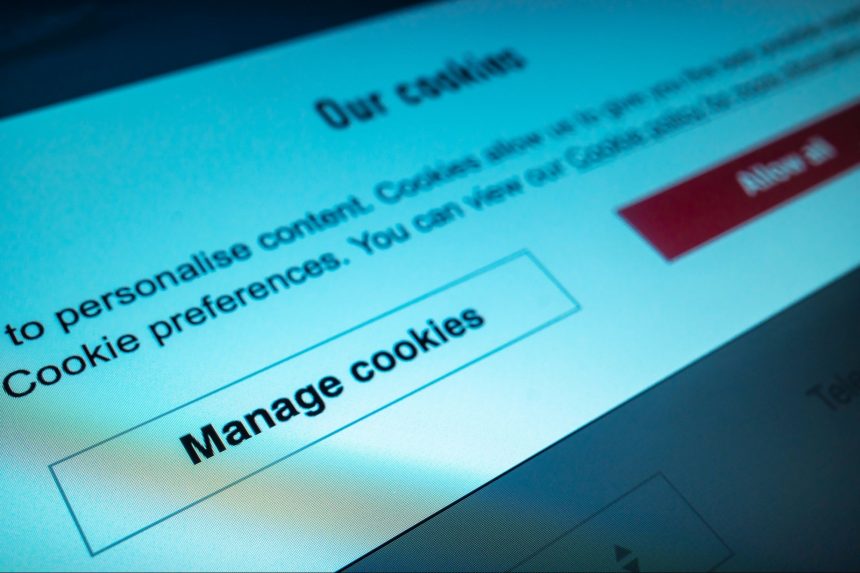Third-party cookies have been dying a slow death for years. Google delayed the destruction of the cookie into 2024, and yet, there’s no doubt that the demise of third-party data is coming. When that happens, it’s going to change everything.
While there will be necessary adjustments along the way, the removal of a cookie-driven marketing economy should be a major upgrade for marketers and customers. Here are a few ways that the absence of cookies will make digital advertising better.
Related: What Are Cookies and How Do They Affect Your Online Business?
1. Cookieless advertising will create a better customer experience
Advertising with cookies is a data-driven affair. This often makes interactions cold and calculated. It can also make them misleading.
In 2022, Search Engine Land was already trumpeting the end of the third-party cookie as a net positive.
“Third-party cookies are predisposed to inflation and double-counting when it comes to conversions,” the publication explains, “And conversions, whether tied to an online purchase or a form submission, are what most businesses truly value.”
Rather than focus on the customer, third-party cookies focus on results — and often, those results are miscalculated and inflated by competing marketing tools. By removing the third-party cookie factor, companies can refocus on what matters most: their customers. A more customer-centric marketing model looks past the algorithms and calculations and attempts to infuse every business activity with a customer-first mindset.
A cookieless future is an opportunity for innovation and creativity. Native advertising platform Nativo utilizes a solution that leans into a new version of contextual targeting that prioritizes customer personalization. This solution uses AI to analyze and predict customer behavior, rather than third-party cookies. If companies rely more on AI for predictive analytics, they can protect the privacy of their customers while still collecting helpful data that can help them convert.
The lesson? Refocusing on the current customer experience rather than third-party data is a good thing.
2. Companies will need to be more intentional with data
In the past, companies have been able to lean on the customer information gleaned by third parties to target their advertisements. This is effective to a degree, but it has also created a relationship gap between companies and their clientele.
Now, brands will need to take a more thoughtful and personalized approach to their data collection and use. Remember, the end of the third-party cookie isn’t technically the end of the cookie concept.
Companies can still collect first-party cookies. Treasure Data refers to these as “data you collect directly from interactions with your customers and audiences on your own channels.” The customer data management platform adds that this can include demographics, website activity, email engagement, purchase history and even customer feedback, interests and other behaviors.
While brands will still be able to collect first-party data, they won’t be able to use it in traditional third-party data methods. Instead, they’ll need to invest in purposeful data management. This will require specific marketing end-goals to make it worthwhile, such as asking for feedback to improve a product or plan a future marketing campaign.
Brands will also need to stay up to date with the latest consumer data privacy laws. As of mid-2023, nine U.S. states had comprehensive data privacy laws in place, and many others had bills in the works. This combination of purpose and security will create much more intentional data use in the future — and that’s absolutely an upgrade from the current third-party cookie marketing environment.
Related: In the Fight for Privacy, Web Cookies Are Disappearing. Here’s What That Means for Your Company’s Advertising Strategy
3. Phasing out third-party cookies will cultivate better customer relationships, too
The removal of third-party cookies will allow brands to refocus on customers, but the impact will go past better awareness and revenue growth. It will also restore a sense of relationship. This, combined with first-party data, will make it easier to personalize and deepen customer connections.
Writing in January 2020, Michael Schoen, the GM and VP of Marketing Solutions at Neustar, said, “A cookieless world is beneficial because it leads to an identity-centric approach, which we have seen to be a more effective approach to marketing.” The executive added, “When you stop focusing on the cookie and instead focus on the consumer’s overall journey, you have more insight and control when it comes to your impact on both.”
The departure from cookies will allow companies to refocus on their customers, not just in specific interactions, but over the long term. They will see them as individuals with thoughts, proclivities and needs rather than reducing them to condensed data points.
Related: How Marketers Can Prepare for the Removal of Third-Party Cookies
From better customer experience to deeper client relationships to safer, more intentional data usage, the death of third-party cookies is likely to have a positive ripple effect that will elevate 21st-century marketing as we know it. The only thing now is to wait until Google starts phasing third-party cookies out next year — then the marketing fun can begin in earnest.
Read the full article here










